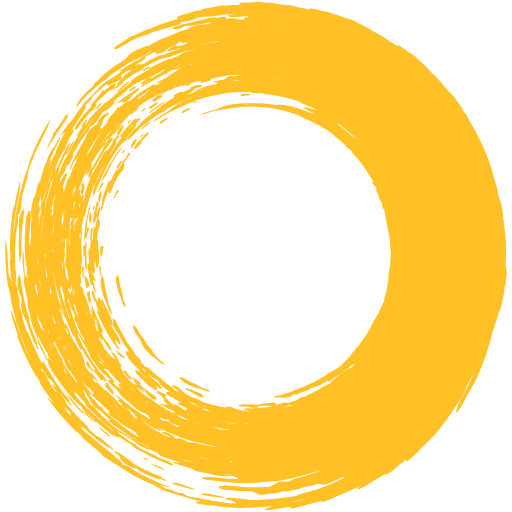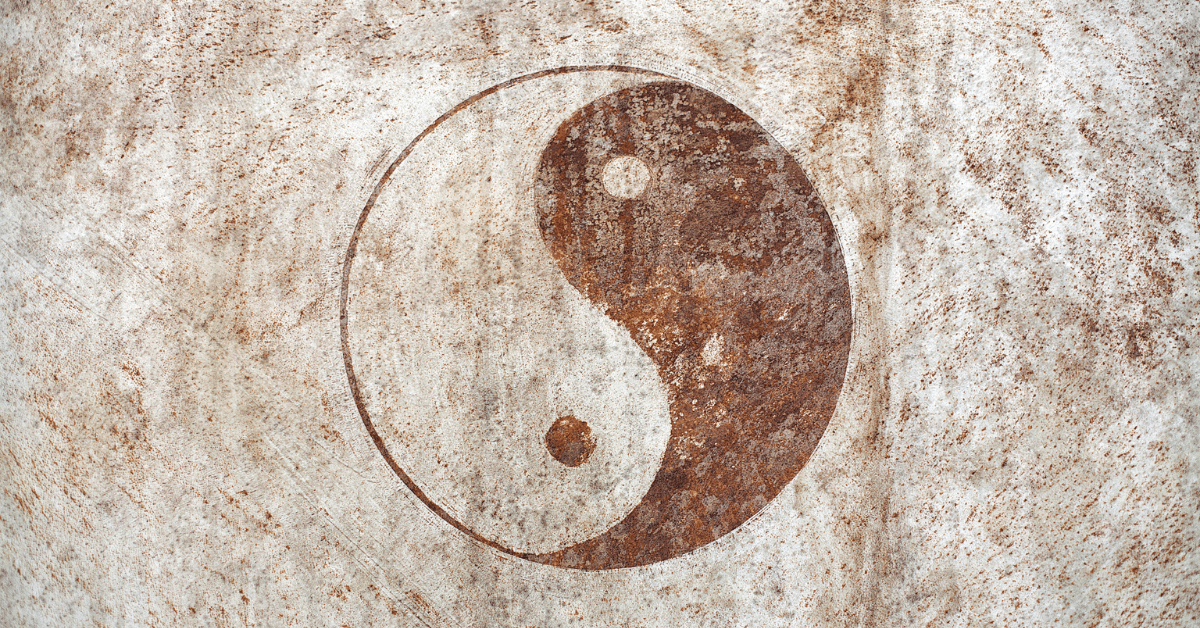The Tao Te Ching is a 6,000-year old spiritual text written by Lao Tzu (also written Laozi). It’s the bedrock of Taoism, a philosophical and religious practice aimed at, among other things, achieving harmony with the Tao, the center of all things.
Now, when I say the center of all things, your eyes probably glaze over. Mine did, too.
Once you understand the Tao, you realize it is sublime, quite beautiful, and serves as a helpful lens through which to experience the world.
My journey in understanding the Tao Te Ching
At some point several months ago, I got a hit to buy and read the Tao Te Ching. I don’t know where this intuitive pull came from, but I’ve been practicing leaning into these little hints from the universe, so I dove in.
Turns out the book is very short. Made up of 81 (very brief) chapters, the Tao Te Ching is more poetic than tactical, offering the reader insightful perspectives on how to live life properly. For example, in the chapter on Humility (chapter 7), Lao Tzu writes:
The universe is eternal,
Lao Tzu. Tao Te Ching. Ancient Renewal.
and earth is lasting.
The reason they are eternal and lasting
is that they do not exist for themselves.
That is why they endure.
You have to chew on this stuff to really get it. Reading it like a newspaper, skimming the pages, or zoning out for a page, isn’t an option. After reading the first few pages, I realized that I had to turn my brain on 100% to really grasp what was being shared. It still didn’t take very long to finish, but after I had completed reading it, I set out to reflect on its lessons.
Integrating the Tao Te Ching
Similar to how you might integrate a psychedelic experience, I began to integrate the lessons in those 81 chapters. Lessons on restraint, “the source,” goodness, prudence, and immateriality all began to permeate my meditations, and then they started to merge together in this kind of “mental model” of Taoism, which I’ll share below.
This is the same mental model that I fall back on when analyzing a situation, when meditating, or generally when I feel not myself. It always brings me back into my body and helps me become more centered.
The Mental Model
The Tao is the conceptual center of all things. Hot and cold, good and evil, happy and sad—these are all dualities that are produced by the Tao’s existence. In Lao Tzu’s words:
The Tao produces unity;
unity produces duality;
duality produces trinity;
trinity produces all things.
All things contain both the negative principle (yin)
and the positive principle (yang).
The third principle, energetic vitality (chi),
makes them harmonious.
The lesson here is that the Tao is balance. For balance to exist, there must be duality, like two sides of a see-saw. In the case of Taoism, one side of the see-saw is Yin and the other side is Yang.
You may have heard of Yin and Yang before—this text is their origin. In traditional Chinese medicine, Yin energy is feminine, cold, and wet. Yang energy is masculine, hot, and dry.
Every duality in life can be traced back to having Yin and Yang energy. One side is feminine, cold, or wet, and the other is masculine, hot, or dry. Our own brains have left and right hemispheres—the left is logical (masculine/Yang) and the right is creative (feminine/Yin). Dualities can be found all around us—and, according to Taoism, it is the movement of Chi (energy) that causes fluctuations between the extremes of these dualities.
Note that the labels associated with Yin and Yang, such as hot and cold, or wet and dry, as mentioned above are just that: labels. It’s not important to know why Yin is feminine and cold; rather, the point is to understand the role duality plays in our daily lives.
Politics shifts from one side to another. Temperature fluctuates between hot and cold. The universe is always working to move energy between two extremes and in a way that brings things back to the Tao, the balance at the center of all things. The movement of energy (or Chi) to keep one system in balance, however, can affect the balance in another system, which means that perfect balance in all things is virtually unattainable. This includes the balance within us.
Put differently, the Tao is an invisible center positioned between competing extremes. These extremes can be external, such as temperature, as well as internal, such as our mood. To live life “properly,” according to Taoism, we simply must pursue the Tao in all things. In our work, in our internal states, in our relationships, and in our environment.
Now here’s the trick:
When you can begin to see the world in terms of dualities, you may feel an urge to “find” the Tao. To win the game. To finally achieve “perfect” balance. Lao Tzu warns against this:
The Tao is obscure and without name,
and yet it is precisely this Tao
that alone can fulfill and complete.
When you truly find and understand something, its power over you and everything else is diminished. It’s the pursuit of the thing that brings out the best in us. The Tao is like this; its illusiveness and obscurity are what bring the best out of those who seek it out. Chapter 67 on Compassion illustrates this beautifully:
The Tao is by nature immaterial,
yet all the world calls it great.
It is because the Tao does not put on appearances that it is great.
When a person puts on a show, trying to appear great,
their mediocrity is soon exposed.
The Tao has three treasures
which the wise guard and cherish:
The first is compassion,
the second is economy,
the third is humility.If you are compassionate,
you can be truly courageous;
if you are economical,
you can be truly generous;
if you are humble,
you can be truly helpful.
If you are brave but lack compassion,
are generous but lack economy,
and try to help others but lack humility,
you’ve lost the way.
Compassion leads to victory in battle
and safety in defense.
Fortune blesses the compassionate.
It’s the pursuit of these virtuous values, and the balance brought by their reward, that leads to a life well lived. This is one of the most beautiful chapters of the Tao Te Ching, and it shows how the many layers of understanding of the Tao can add up to principles that can be practically applied to everyday life.
A few closing thoughts
The Tao Te Ching speaks a lot about leadership. It’s in many ways a guide for good governance, bringing up specific points about what makes a good leader versus a bad one. I found this an interesting theme to find in an ancient book on spirituality, but upon further reflection as I was reading through, I realized it makes perfect sense. The road of personal growth inevitably leads us to achieve mastery over ourselves, which in turn leads others to follow us. Thus, the Tao Te Ching focuses its lessons around a theme of leadership.
If you run a business, or you’re in a position of leadership, take a read through this text and see how it affects your leadership style and overall outlook on life. Speaking for myself, I’ve found it to be a refreshing perspective on the world that has deepened my appreciation for life and my approach to living, both in business and in every other area of life.


